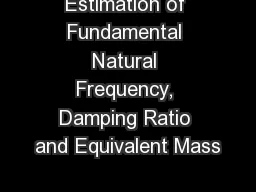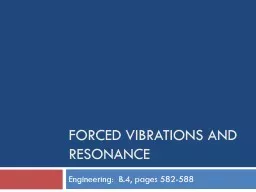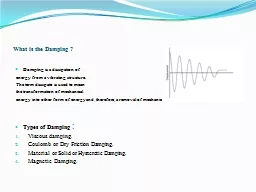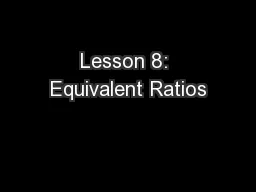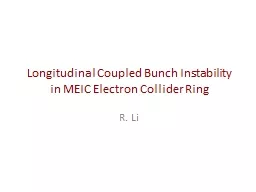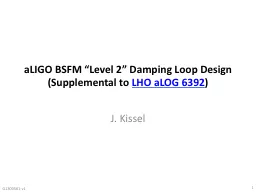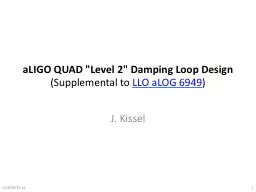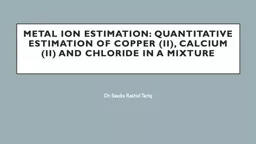PPT-Estimation of Fundamental Natural Frequency, Damping Ratio and Equivalent Mass
Author : aaron | Published Date : 2018-09-21
421L521L Lab 8 Single DOF Modeling E I L ρ E I L ρ M k c x mx cx kx ft xt Aexp ξ ω n t COS ω n sqrt 1 ξ 2 t ψ Bsin
Presentation Embed Code
Download Presentation
Download Presentation The PPT/PDF document "Estimation of Fundamental Natural Freque..." is the property of its rightful owner. Permission is granted to download and print the materials on this website for personal, non-commercial use only, and to display it on your personal computer provided you do not modify the materials and that you retain all copyright notices contained in the materials. By downloading content from our website, you accept the terms of this agreement.
Estimation of Fundamental Natural Frequency, Damping Ratio and Equivalent Mass: Transcript
Download Rules Of Document
"Estimation of Fundamental Natural Frequency, Damping Ratio and Equivalent Mass"The content belongs to its owner. You may download and print it for personal use, without modification, and keep all copyright notices. By downloading, you agree to these terms.
Related Documents

